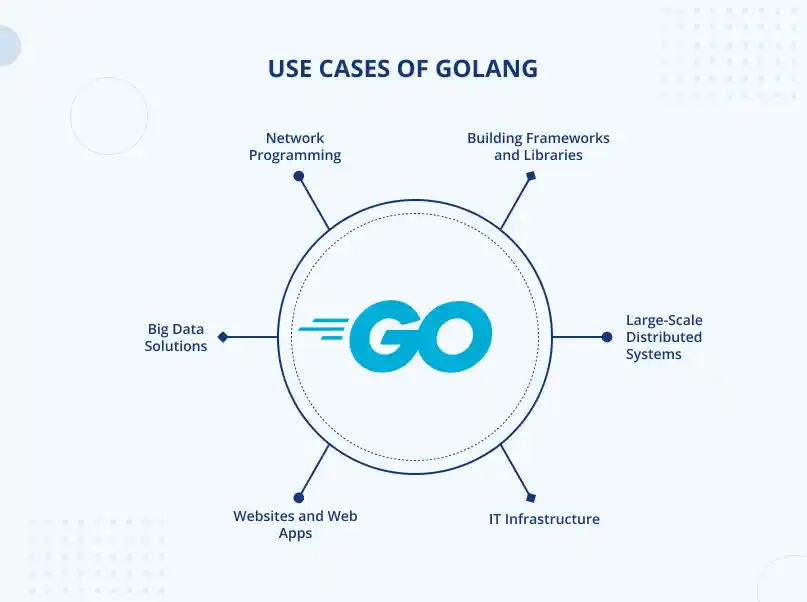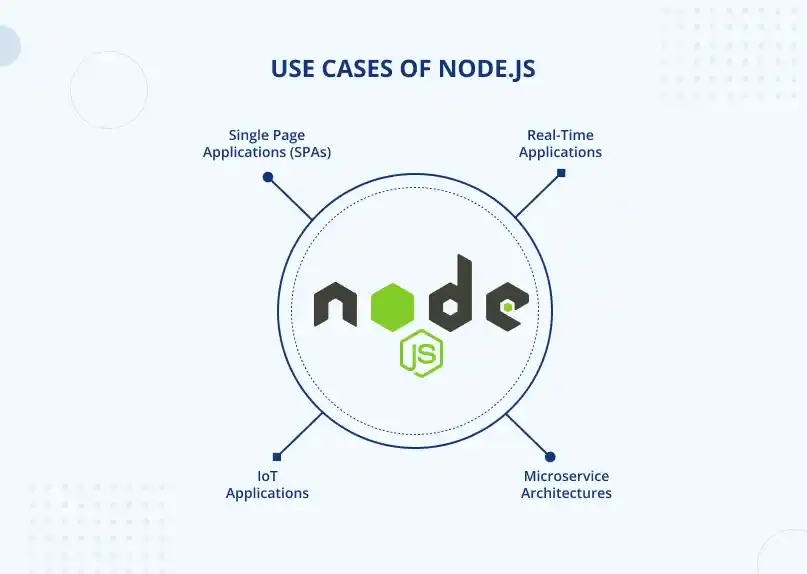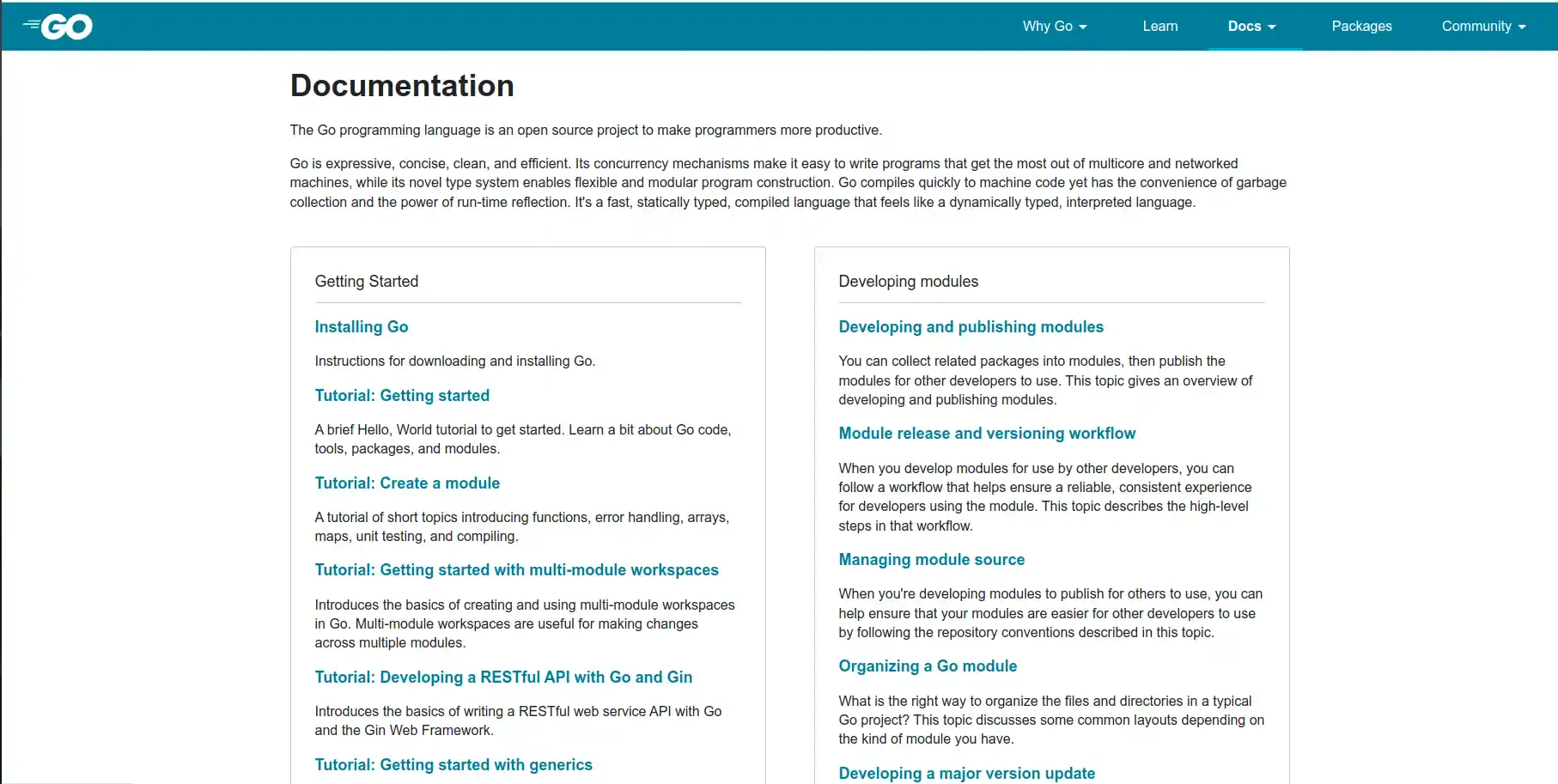Choosing the right backend technology is crucial for the success and efficiency of a web development project. Two popular choices that developers often consider are GoLang vs Node js. Both of these technologies offer unique strengths and use cases, making the decision between them a complex yet vital one. This post will provide a detailed comparison of GoLang and Node.js, helping you make an informed decision based on your project requirements.
Table of Contents
Introduction
In the realm of backend development, the choice of technology can significantly impact the efficiency, scalability, and maintainability of an application. GoLang and Node.js are two prominent technologies that have gained widespread popularity for their unique features and performance characteristics. This article delves into a detailed comparison of GoLang and Node.js, providing insights into their architecture, ecosystem, security, and more, to help you choose the best technology for your next project.
What is GoLang?
GoLang, or the Go Programming Language, is a statically typed, procedural language with syntax that is comparable to C. Developed by Google in 2007 and launched as an open-source language in 2009, GoLang is widely used in Google’s production systems. Known for its rich standard library, garbage collection, and dynamic typing, GoLang has become a trending language among developers for its efficiency and performance.
Key Features of GoLang
- Simplicity: GoLang is designed to be simple and easy to learn, with a clean and concise syntax.
- Performance: As a compiled language, GoLang offers high performance, compiling directly to machine code for fast execution.
- Concurrency: GoLang has built-in support for concurrent programming with goroutines, enabling efficient handling of multiple tasks.
- Garbage Collection: Automatic memory management through garbage collection ensures efficient resource usage.
- Standard Library: GoLang’s extensive standard library provides built-in support for various functionalities, reducing the need for third-party libraries.

What is Node.js?
Node.js is an open-source, cross-platform JavaScript runtime environment that enables developers to execute JavaScript on the server side. Developed by Ryan Dahl in 2009, Node.js is excellent for creating backend services and running web applications outside the browser. Using the V8 JavaScript engine from Google Chrome, Node.js provides a powerful and efficient way to build scalable and high-performance applications.
Key Features of Node.js
- Asynchronous and Event-Driven: Node.js is designed for asynchronous operations, making it ideal for real-time applications.
- Single-Threaded but Scalable: Despite being single-threaded, Node.js can handle multiple connections concurrently through its non-blocking I/O model.
- NPM (Node Package Manager): Node.js has a vast ecosystem of libraries and packages available through NPM, facilitating rapid development.
- JavaScript Everywhere: Node.js enables developers to utilize JavaScript for both frontend and backend development, providing uniformity throughout the application.

GoLang vs Node js: Which One to Choose for 2024?
GoLang and Node.js are both powerful frameworks with distinct strengths and use cases. They thrive in various areas, giving developers distinct advantages. Let’s compare them across various aspects to determine which one might be the best choice for your needs in 2024.
Language and Ecosystem GoLang vs Node js
GoLang
GoLang is a statically typed, procedural language with a syntax reminiscent of C. It is intended to be simple, quick, and efficient. The GoLang ecosystem is growing, with a focus on simplicity, performance, and concurrency. GoLang’s tools and resources are integrated into its standard library, providing robust support for concurrent programming and networking.
For organizations seeking expertise, golang consulting services are increasingly available to help leverage GoLang’s capabilities for building high-performance applications.
- Growing Ecosystem: The GoLang ecosystem is expanding, with increasing support for various libraries and tools.
- Built-In Tools: GoLang includes many built-in tools for concurrency, networking, and other common tasks.
- Performance Focus: GoLang’s design prioritizes performance and efficiency, making it suitable for high-performance applications.
Node.js
Node.js is built on JavaScript, known for its ability to handle asynchronous programming. It has a large community and a rich ecosystem of tools and resources available through NPM, its package manager. Node.js is excellent for building applications that can handle many tasks simultaneously, thanks to its event-driven, non-blocking I/O model.
- Large Community: Node.js has a vast community, providing extensive support and resources.
- NPM Ecosystem: The NPM ecosystem offers a wide range of libraries and tools, facilitating rapid development.
- Asynchronous Programming: Node.js is designed for asynchronous operations, making it suitable for real-time applications.
Architecture GoLang vs Node js
GoLang
GoLang’s architecture is concurrency-oriented, making it perfect for developing highly concurrent applications.
- Concurrency Model: GoLang uses goroutines, lightweight threads managed by the Go runtime, to handle multiple tasks simultaneously without significant overhead.
- Channels: Channels in GoLang allow safe communication and synchronization between goroutines, ensuring efficient task coordination.
- Memory Management: GoLang features automatic memory management through garbage collection, preventing memory leaks and ensuring smooth operation.
- Standard Library: GoLang’s extensive standard library includes tools for networking, security, and file handling, reducing the need for external dependencies.
- Concurrency Patterns: GoLang provides clear concurrency patterns, helping developers create maintainable and efficient concurrent programs.
Node.js
Node.js uses an event-driven architecture, which makes it efficient for handling multiple tasks simultaneously.
- Event-Driven Architecture: Node.js uses an event-driven, non-blocking I/O model, enabling it to manage numerous connections efficiently.
- Callback Mechanism: Node.js relies on callbacks for asynchronous operations, allowing functions to be executed once an operation is complete.
- Single-Threaded: Node.js operates on a single thread, handling multiple connections without the overhead of managing multiple threads.
- Libuv Library: Node.js uses the Libuv library to manage asynchronous operations, ensuring smooth performance even with many concurrent tasks.
- npm Ecosystem: The extensive npm ecosystem provides numerous tools and resources for building scalable and feature-rich applications.
Security Features GoLang vs Node js
GoLang
GoLang has a strong focus on security, with built-in support for secure coding practices and principles.
- Secure Coding Practices: GoLang provides tools for secure coding, including secure random number generation, encryption, and hashing.
- Garbage Collection: Automatic memory management through garbage collection helps prevent memory leaks and security vulnerabilities.
- Simplicity and Performance: GoLang’s focus on simplicity and performance extends to its security features, making it suitable for building secure applications.
Node.js
Node.js also emphasizes security, with built-in support for secure coding practices and principles.
- Secure Coding Practices: Node.js provides tools for secure coding, including secure random number generation, encryption, and hashing.
- Asynchronous Nature: Node.js’s asynchronous nature helps in building scalable and secure applications by efficiently managing resources.
- Community Contributions: The large Node.js community continually contributes to security best practices and tools, enhancing the overall security of Node.js applications.
Database Support GoLang vs Node js
GoLang
GoLang provides robust support for working with databases, including standard packages and third-party libraries.
- Standard Database Packages: GoLang includes packages like database/sql for generic SQL database access and drivers for specific databases like MySQL, PostgreSQL, and SQLite.
- ORM Support: While GoLang does not have a built-in ORM, third-party libraries like GORM and XORM provide ORM functionality, allowing developers to work with database entities as native GoLang vs Node.js objects.
- Concurrency and Scalability: GoLang’s concurrency features make it well-suited for building database applications requiring high concurrency and scalability.
- Driver Availability: GoLang’s ecosystem includes a rich array of database drivers, ensuring performance and compatibility with various databases.
Node.js
Node.js offers extensive support for working with databases through its npm modules and ORM frameworks.
- npm Modules: Node.js provides a wide range of npm modules for various databases, including MongoDB, MySQL, PostgreSQL, and Redis.
- ORM Frameworks: Popular ORM frameworks for Node.js, such as Bookshelf.js, TypeORM, and Sequelize, simplify database interactions by allowing developers to work with database entities as JavaScript objects.
- Event-Driven Nature: Node.js’s event-driven, non-blocking architecture is well-suited for handling database operations asynchronously, making it suitable for scalable applications.
- Asynchronous Database Drivers: Node.js database drivers are designed to work asynchronously, ensuring scalability and responsiveness.
Community and Documentation GoLang vs Node js
GoLang
GoLang boasts a vibrant and expanding community focused on concurrency, performance, and simplicity.
- Growing Community: GoLang’s community is continuously expanding, providing support and contributing to open-source projects.
- Comprehensive Documentation: GoLang offers extensive documentation covering best practices, the standard library, and language features.
- Supportive Ecosystem: The GoLang community is known for its helpfulness and support for open-source initiatives.

Node.js
Node.js has a large and active community dedicated to JavaScript and server-side development.
- Active Community: Node.js has a vast community that collaborates and shares resources through forums, GitHub, and other platforms.
- Comprehensive Documentation: Node.js provides detailed documentation covering core concepts, APIs, and best practices.
- npm Ecosystem: The npm ecosystem offers a wide range of libraries and tools, enhancing the capabilities of Node.js applications.

Flexibility and Customization GoLang vs Node js
GoLang
GoLang is designed for simplicity and performance, minimizing the need for external dependencies.
- Integrated Library: GoLang’s standard library covers a wide range of functionalities, reducing the reliance on third-party libraries.
- Lightweight Applications: GoLang’s focus on simplicity makes it suitable for developing lightweight, standalone applications.
- Efficiency: GoLang’s design prioritizes efficiency and minimalism, making it a good choice for straightforward applications.
Node.js
Node.js offers a rich ecosystem of modules and frameworks, providing extensive flexibility and customization options.
- npm Ecosystem: The npm ecosystem provides a vast array of modules and tools for building feature-rich applications.
- Customization: Developers can choose from a wide range of modules and tools to tailor their development environment to their needs.
- Scalability: Node.js’s flexibility makes it suitable for building scalable applications with diverse functionalities.
Testing Support GoLang vs Node js
GoLang
GoLang includes a built-in testing framework, providing tools for various types of testing.
- Built-In Testing Tools: GoLang’s testing framework includes tools for unit testing, integration testing, and benchmarking.
- Comprehensive Testing: GoLang’s testing tools help developers write and execute tests, ensuring code reliability and performance.
- Simplicity: GoLang’s focus on simplicity extends to its testing framework, making it easy to write and maintain tests.
Node.js
Node.js offers a wide variety of testing frameworks and libraries, providing extensive support for testing.
- Testing Frameworks: Node.js provides various testing frameworks like Mocha, Jasmine, and Jest, each offering unique features for different testing needs.
- Comprehensive Testing: Node.js’s testing frameworks support unit testing, integration testing, and end-to-end testing, ensuring code reliability.
- Rich Ecosystem: The rich ecosystem of testing tools in Node.js allows developers to choose the best tools for their specific testing requirements.
Learning Curve GoLang vs Node js
GoLang
Learning GoLang is relatively straightforward, especially for developers familiar with similar languages.
- Easy to Learn: GoLang’s simplicity and clear syntax make it easy to learn and understand.
- Straightforward: GoLang’s design minimizes complexity, making it accessible for beginners and experienced developers alike.
- Efficient Learning: GoLang’s focus on efficiency and performance makes it an excellent choice for developers looking to learn a powerful and straightforward language.
Node.js
Learning Node.js can be challenging, especially for those new to asynchronous programming and event-driven architecture.
- JavaScript Knowledge: Node.js requires a good understanding of JavaScript, including its asynchronous features and event-driven nature.
- Complexity: Node.js’s event-driven architecture and non-blocking I/O model may take some time to master.
- Versatility: Node.js’s versatility and extensive ecosystem provide a rewarding learning experience for developers familiar with JavaScript.
GoLang vs Node js: Quick Comparison Table
| Aspect | GoLang | Node.js |
| Language | Statically typed, procedural, syntax similar to C | Uses JavaScript, asynchronous programming |
| Ecosystem | Growing collection of tools and resources | Large community, npm ecosystem |
| Concurrency | Designed for concurrency | Event-driven, non-blocking I/O |
| Security | Built-in support for secure coding practices | Focus on secure coding, encryption |
| Database | Standard database packages, ORM support | npm modules for various databases, ORM frameworks |
| Community | Vibrant and expanding | Active community, comprehensive documentation |
| Flexibility | Integrated library, lightweight apps | Rich ecosystem, feature-rich apps |
| Testing | Built-in framework, supports various tests | Wide variety of testing frameworks |
| Learning Curve | Easy to learn | May have a learning curve |
Conclusion
In conclusion, Golang vs Node js both GoLang and Node js bring their unique strengths to the table. GoLang shines in performance, simplicity, and scalability, making it an excellent choice for high-performance applications requiring efficient concurrency. On the other hand, Node.js offers flexibility, a rich ecosystem, and strong support for real-time and I/O-intensive applications, making it ideal for rapid development and scalable projects.
Choosing between GoLang and Node.js ultimately depends on your project’s specific requirements, your team’s skills, and your goals. If your project demands high performance, efficient concurrency, and scalability, GoLang might be the better choice. If you need rapid development, a vast ecosystem, and robust support for real-time interactions, Node.js could be the way to go.
Whether you choose GoLang for its efficiency or Node.js for its flexibility, both are powerful technologies that can help you build successful and efficient applications.